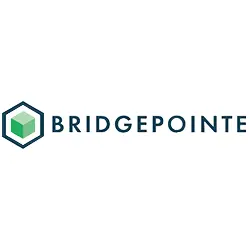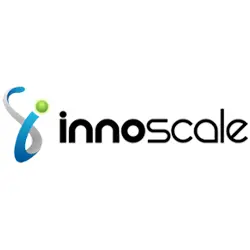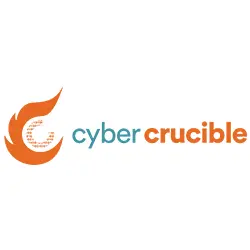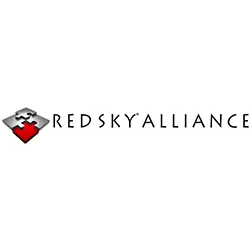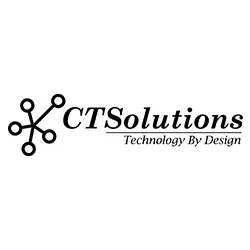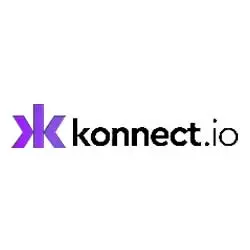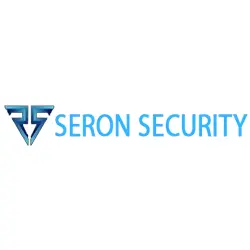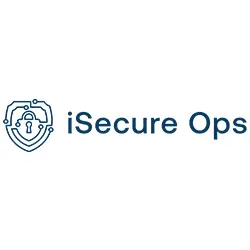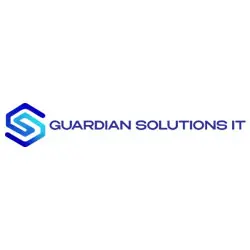As cyber threats continue to evolve, staying ahead of the latest cybersecurity trends is no longer optional for enterprises—it’s essential. From leveraging AI-driven tools to adopting proactive security frameworks, businesses that prioritize enterprise security can safeguard sensitive data, maintain compliance, and build trust with their customers. In this comprehensive guide, we’ll explore the top 5 trends that will be shaping cybersecurity in 2025 and how enterprises can adapt to remain resilient in an ever-changing digital landscape.

1. AI-Driven Threat Detection and Response
Artificial Intelligence (AI) is at the forefront of cybersecurity trends, offering unparalleled capabilities for identifying and mitigating cyber threats.
- Why it matters: Cyberattacks are becoming increasingly complex, and manual monitoring tools can’t keep up. AI uses machine learning to analyze patterns, detect anomalies, and predict vulnerabilities before they can be exploited.
- How AI is used in enterprise security:
- Behavioral analytics to monitor user activity for unusual behavior.
- Phishing detection that identifies malicious emails before employees see them.
- Malware prevention systems that block new threats without requiring signature updates.
- Real-world success story: A global bank implemented AI fraud detection and reduced fraudulent transactions by 40%, saving millions annually.
- How to prepare your business: Start by integrating AI tools like Security Orchestration, Automation, and Response (SOAR) systems to enhance incident response. Train your security teams to work alongside AI tools for maximum efficiency.
AI doesn’t just improve detection; it enables enterprises to respond faster and more effectively, minimizing damage and downtime.
2. Rise of Zero Trust Architecture
The days of relying on perimeter-based security models are over. In 2025, Zero Trust Architecture (ZTA) will become the go-to framework for enterprise security.
- Core principles: Zero Trust assumes that no user or device can be trusted by default, even if they are inside the network. Every access request must be verified before granting permissions.
- Why it’s important now: With the rise of remote work, cloud adoption, and Bring Your Own Device (BYOD) policies, traditional network boundaries no longer exist. Attackers can exploit these gaps to gain unauthorized access.
- Key components of ZTA:
- Multi-factor authentication (MFA) to verify user identities.
- Micro-segmentation to limit lateral movement within networks.
- Continuous monitoring of user activity to detect suspicious behavior.
- Real-world example: A tech company that adopted ZTA reduced insider threats by 35% and improved overall security compliance.
- How to get started: Identify your organization’s most critical assets and implement Zero Trust policies around them first. Gradually extend these policies across your IT ecosystem.
By embracing Zero Trust, enterprises can protect their data, prevent unauthorized access, and reduce the impact of breaches.
3. Cloud Security Takes Center Stage
As more enterprises migrate to the cloud, ensuring robust cloud security will be one of the most significant cybersecurity trends in 2025.
- Current risks in cloud environments:
- Misconfigured settings that leave data exposed to the public internet.
- Insecure APIs that provide entry points for attackers.
- Compliance challenges with data privacy laws like GDPR and HIPAA.
- How enterprises are addressing these challenges:
- Using Cloud Access Security Brokers (CASBs) to enforce consistent security policies across platforms.
- Encrypting sensitive data both at rest and in transit.
- Conducting regular vulnerability scans to identify and remediate risks.
- Future outlook: The adoption of hybrid and multi-cloud strategies is accelerating. Businesses need tools that provide unified visibility and control across diverse cloud environments.
- Actionable steps: Review your cloud infrastructure regularly, implement real-time monitoring tools, and ensure all configurations align with best practices.
A strong cloud security posture ensures data integrity, reduces the risk of breaches, and helps enterprises scale securely.
4. Bridging the Cybersecurity Skills Gap
The global shortage of cybersecurity professionals will be a critical challenge for enterprises in 2025, but solutions are emerging.
- Why it’s a problem: A lack of skilled workers leaves security teams stretched thin, increasing the likelihood of missed threats and slow incident response.
- How enterprises are responding:
- Upskilling existing employees through training and certifications in areas like ethical hacking and incident response.
- Partnering with Managed Security Service Providers (MSSPs) to gain access to specialized expertise.
- Automating repetitive security tasks like log analysis to reduce the workload on human teams.
- Pro tip: Introduce gamified training programs that simulate real-world attacks to help employees learn in an engaging and practical way.
- Benefits of addressing the gap: Enterprises that invest in bridging the skills gap report fewer security incidents and faster response times.
By focusing on training and automation, businesses can build resilient teams capable of tackling even the most complex security challenges.
5. Proactive Threat Intelligence Integration
Threat intelligence will be a cornerstone of cybersecurity trends in 2025, enabling enterprises to move from reactive defenses to proactive threat mitigation.
- What is threat intelligence? It’s the process of gathering and analyzing data about potential or ongoing cyber threats to improve decision-making.
- Key benefits:
- Early detection of vulnerabilities before they are exploited.
- Improved response times to active threats.
- Insights into attackers’ methods and tools, enabling better defense strategies.
- Real-world example: Enterprises using threat intelligence platforms saw a 50% improvement in their ability to detect and respond to threats.
- How to implement it effectively:
- Use platforms that consolidate data from multiple sources, including open-source threat feeds and dark web monitoring tools.
- Align threat intelligence with your organization’s specific risk profile for more actionable insights.
- Train your security team to act on threat intelligence findings efficiently.
Proactive threat intelligence gives enterprises a competitive edge, enabling them to outpace attackers and mitigate risks.
Why These Cybersecurity Trends Matter in 2025
.jpeg?access_token=34d31829-2e21-49a0-9c18-92a2570d49e1)
The rapid pace of innovation in cyberattacks means enterprises can no longer afford to rely on outdated defenses. By adopting these cybersecurity trends, businesses can reduce their attack surface, improve incident response, and maintain customer trust.
Whether you’re integrating AI, implementing Zero Trust, or upskilling your workforce, these trends provide a roadmap for securing your enterprise in 2025.
Are You Ready to Secure Your Business in 2025?
Don’t wait for the next cyberattack to strike. Start assessing your current security measures today and adopt the technologies and strategies discussed here. Need help getting started? Contact TRaViS ASM to explore customized cybersecurity solutions that fit your organization’s unique needs.

Top 10 Questions Asked About Cybersecurity Trends
- What is the biggest cybersecurity trend for 2025?
- AI-driven threat detection is the most impactful trend, helping enterprises respond faster to threats.
- Why is Zero Trust Architecture important in 2025?
- It eliminates implicit trust, reducing the risk of insider and external threats.
- What are the main risks in cloud security?
- Misconfigurations, insecure APIs, and compliance challenges are the top concerns.
- How can enterprises address the cybersecurity skills gap?
- By upskilling employees, leveraging MSSPs, and automating repetitive tasks.
- What is proactive threat intelligence?
- It involves collecting and analyzing data about potential threats to prevent attacks before they happen.
- How can AI improve enterprise security?
- AI identifies anomalies, predicts vulnerabilities, and responds to threats in real time.
- What industries benefit the most from Zero Trust?
- Highly regulated industries like finance, healthcare, and government are early adopters.
- Are hybrid cloud strategies secure?
- Yes, with proper tools like CASBs and encryption, hybrid clouds can be secure.
- How do threat intelligence platforms work?
- They aggregate data from multiple sources to provide actionable insights into cyber threats.
- What should enterprises prioritize in 2025 for cybersecurity?
- A mix of AI tools, Zero Trust policies, cloud security measures, and continuous employee training.
Want to find out how TRaViS ASM can help with many of your problems?

